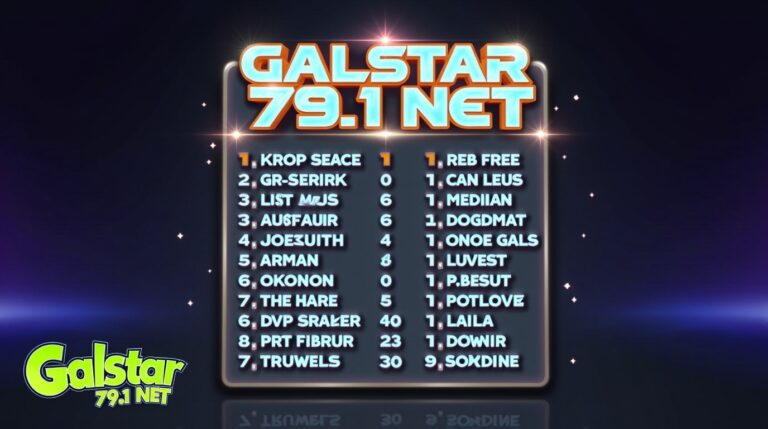
Colorado Rockies: Everything You Need to Know About Denver's MLB Team
The Colorado Rockies have been a staple of Major League Baseball since their inception, captivating fans with their high-altitude play and resilient spirit. As one of the younger franchises in the league, the Colorado Rockies represent the vibrant city of Denver and its passionate sports community. Whether you’re a die-hard supporter or new to the team, this article explores the rich history, iconic players, home stadium, achievements, current status, and future prospects of the Colorado Rockies. With a focus on what makes the Colorado Rockies unique, we’ll dive deep into their journey, ensuring you get a comprehensive and engaging read.
The History of the Colorado Rockies
The story of the Colorado Rockies begins in the early 1990s when Major League Baseball expanded to include new teams. The Colorado Rockies were officially founded as an expansion franchise in 1991, making their debut in the National League West division in 1993. Denver had long yearned for a major league team, with roots tracing back to minor league baseball outfits like the Denver Bears. The name “Colorado Rockies” was chosen to honor the majestic Rocky Mountains that surround the region, symbolizing strength and endurance.
In their inaugural season, the Colorado Rockies played at Mile High Stadium, drawing massive crowds and setting an MLB attendance record with over 4.4 million fans. This enthusiasm highlighted the hunger for baseball in Colorado. By 1995, the Colorado Rockies moved to their permanent home, Coors Field, which quickly became known for its offensive-friendly environment due to the thin air at high elevation. Early years saw the Colorado Rockies struggle with consistency, but they made their first playoff appearance in just their third season, in 1995, as a wild card team.
Throughout the 1990s and early 2000s, the Colorado Rockies built a reputation for powerful hitting lineups. The “Blake Street Bombers” era featured sluggers who thrived in the mile-high conditions, leading to exciting, high-scoring games. Despite challenges like pitching difficulties in the altitude, the Colorado Rockies have remained competitive at times, blending homegrown talent with strategic acquisitions. Over the decades, ownership changes, including the Monfort brothers taking control in 2005, have shaped the franchise’s direction, emphasizing community involvement and fan experience.
Iconic Players Who Defined the Colorado Rockies
No discussion of the Colorado Rockies is complete without highlighting the stars who have worn the purple and black. Todd Helton, a first baseman who spent his entire 17-year career with the Colorado Rockies, is a Hall of Famer inducted in 2024. Known as “The Toddfather,” Helton holds numerous franchise records, including hits, home runs, and RBIs, with a career .316 batting average. His loyalty to the Colorado Rockies made him a symbol of the team’s perseverance.
Larry Walker, another Hall of Famer, joined the Colorado Rockies in 1995 and became the first player to represent the team in Cooperstown with a Rockies cap on his plaque. Walker’s five-tool skills—hitting for average and power, speed, arm strength, and defense—earned him the 1997 NL MVP award. Other legends include the Blake Street Bombers: Andrés Galarraga, Dante Bichette, and Vinny Castilla, who powered the Colorado Rockies to their early success with booming home runs.
In more recent years, players like Nolan Arenado and Troy Tulowitzki brought defensive excellence and leadership to the Colorado Rockies. Arenado, a multiple Gold Glove winner, was traded in 2021 but left a lasting impact. Charlie Blackmon, the bearded outfielder, has been a mainstay since 2011, providing consistency and fan-favorite moments. Emerging talents like Ezequiel Tovar and Brenton Doyle continue to build on this legacy, offering hope for the Colorado Rockies’ future.
Coors Field: The Iconic Home of the Colorado Rockies
Coors Field stands as a crown jewel for the Colorado Rockies, opened in 1995 in Denver’s Lower Downtown district. Nicknamed “The Can” for its sponsor, this ballpark is renowned for its hitter-friendly dimensions and the effects of playing at 5,280 feet above sea level. Balls travel farther in the thin air, leading to legendary offensive explosions and challenging pitchers to adapt.
The stadium’s design incorporates Rocky Mountain views, with pine trees in the bullpen and a rooftop party deck offering panoramic sights. For fans, Coors Field provides a unique experience, from the famous “Rockpile” bleachers to craft beer selections reflecting Colorado’s brewing culture. The Colorado Rockies have leveraged this home-field advantage, often posting strong offensive stats. Spring training takes place at Salt River Fields in Arizona, shared with the Diamondbacks, where the Colorado Rockies prepare for the rigors of the season.
Over the years, Coors Field has hosted memorable events, including All-Star Games and postseason thrillers. Its reputation as a “hitter’s paradise” has influenced how the Colorado Rockies build their rosters, prioritizing versatile pitchers and power bats.
Achievements and Milestones for the Colorado Rockies
While the Colorado Rockies have yet to win a World Series, their achievements are noteworthy. The team has made the playoffs five times (1995, 2007, 2009, 2017, 2018), all as wild cards, showcasing their ability to surge when it matters. The pinnacle came in 2007 with “Rocktober,” a miraculous run where the Colorado Rockies won 21 of 22 games, including a one-game playoff tiebreaker, to clinch the NL pennant. They swept the Phillies and Diamondbacks before falling to the Red Sox in the World Series.
Individual accolades abound for the Colorado Rockies. Players have claimed multiple Silver Slugger and Gold Glove awards, with Larry Walker’s MVP standing out. The franchise boasts impressive attendance records, reflecting strong fan support even in down years. Milestones like Helton’s 2,000th hit and Walker’s cycle highlight the Colorado Rockies’ offensive prowess.
Despite divisional challenges in the tough NL West, the Colorado Rockies have contributed to MLB’s growth, promoting baseball in the Mountain West region.
The 2025 Season: Challenges and Bright Spots for the Colorado Rockies
The 2025 season has been a rollercoaster for the Colorado Rockies, marked by historic lows but ending on a note of relief. Starting with a dismal 8-42 record through 50 games—the worst in MLB history—the Colorado Rockies faced intense scrutiny. Manager Bud Black was replaced by interim Warren Schaeffer after a 7-33 start, as the team struggled with injuries and inconsistencies.
By mid-season, the Colorado Rockies were eliminated from postseason contention on August 23, the first team to be knocked out. Their run differential sat at a league-worst -404, underscoring pitching woes and offensive slumps. Key pitchers like Kyle Freeland and Germán Márquez battled for form, while the bullpen, including Victor Vodnik, showed flashes of potential.
However, bright spots emerged. Young players like shortstop Ezequiel Tovar and outfielder Brenton Doyle provided defensive highlights and speed. On the mound, prospects like Chase Dollander offered glimpses of future talent, despite injuries sidelining some. Offensively, veterans like Ryan McMahon contributed power, with the team occasionally exploding for high-scoring wins.
As of September 20, 2025, the Colorado Rockies stand at 42-112 after a thrilling 7-6 victory over the Los Angeles Angels on September 19. This win ensured the Colorado Rockies avoided breaking the 2024 Chicago White Sox’s modern record of 121 losses, finishing with at least 42 wins. Fan reactions on social media exploded with relief, with posts celebrating the avoidance of “worst team ever” status. Bets and predictions swirled, but the resilience shown in this late-season push reminds fans why they love the Colorado Rockies.
The current 40-man roster features a mix of veterans and prospects. Pitchers include Bradley Blalock (R/R, 6’2″, 213 lbs, born 12/25/2000), Kyle Freeland (L/L, 6’4″, 204 lbs, born 05/14/1993), and Germán Márquez (R/R, 6’1″, 230 lbs, born 02/22/1995). Catchers like Braxton Fulford and infielders such as Ezequiel Tovar anchor the team, with several on injured lists like Zach Agnos (IL-15). This blend aims to rebuild amid challenges.
Future Prospects for the Colorado Rockies
Looking ahead, the Colorado Rockies face an offseason of rebuilding. With a young core and farm system prospects like Adael Amador and Jordan Beck, the focus will be on developing pitching to counter Coors Field’s effects. General Manager Bill Schmidt may target free agents or trades to bolster the rotation, emphasizing analytics and player development.
Fan optimism persists, with calls for ownership to invest more aggressively. The Colorado Rockies’ commitment to community programs and youth baseball could pay dividends in talent pipelines. If the team addresses inconsistencies, the Colorado Rockies could return to contention in the coming years, leveraging their unique home advantage.
Conclusion
The Colorado Rockies embody the spirit of perseverance, from their expansion roots to thrilling playoff runs and recent challenges. Despite not claiming a championship, the Colorado Rockies have created unforgettable moments for fans, building a legacy in Denver’s sports scene. As the 2025 season wraps up with a sigh of relief, the future holds promise for the Colorado Rockies. Whether at Coors Field or following from afar, supporting the Colorado Rockies means embracing highs and lows in one of baseball’s most exciting environments. Here’s to more “Rocktober” magic ahead for the Colorado Rockies.
FAQs
What is the home stadium of the Colorado Rockies?
The Colorado Rockies play at Coors Field in Denver, Colorado, known for its high-altitude effects on gameplay.
How many times have the Colorado Rockies made the playoffs?
The Colorado Rockies have reached the postseason five times: 1995, 2007, 2009, 2017, and 2018, all as wild card teams.
Who are some Hall of Famers associated with the Colorado Rockies?
Todd Helton and Larry Walker are Hall of Famers who spent significant careers with the Colorado Rockies, both inducted with team affiliations.
What was the highlight of the 2007 season for the Colorado Rockies?
In 2007, the Colorado Rockies won the National League pennant after a historic late-season surge, though they lost the World Series to the Boston Red Sox.
How did the Colorado Rockies perform in the 2025 season?
The Colorado Rockies had a tough 2025, finishing with 42 wins and avoiding the worst loss record in modern MLB history after a key victory over the Angels.
Who owns the Colorado Rockies?
The Colorado Rockies are principally owned by brothers Dick and Charlie Monfort, who took over in 2005.






